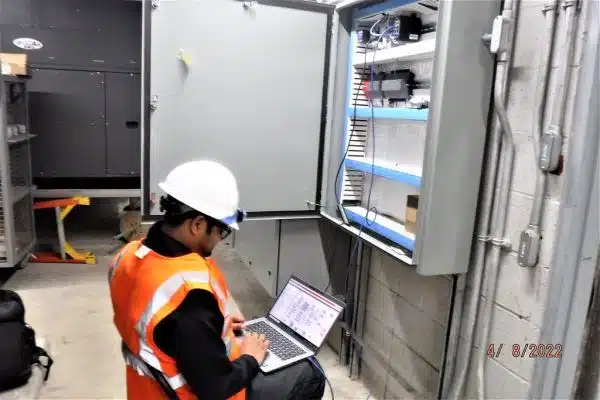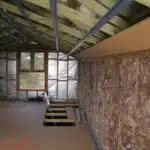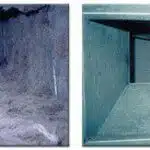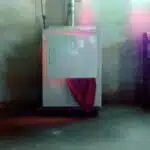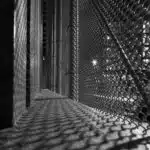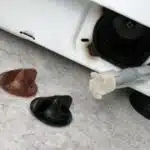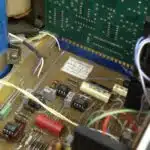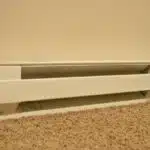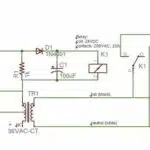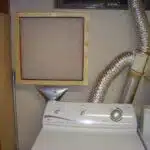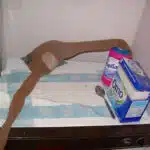As a HVAC system engineer, I have seen many homeowners struggle with the decision to purchase a new heating, ventilation, and air conditioning (HVAC) system. It is a significant investment that can affect the comfort level of their homes and the size of their wallets. However, it is also an opportunity to improve energy efficiency, reduce utility bills, and enhance indoor air quality. Therefore, it is crucial to consider all factors before making a decision.
One of the most important factors when purchasing a new HVAC system is cost-effectiveness. The upfront cost of purchasing and installing a new unit can be daunting for many homeowners. However, there are ways to save money on a new HVAC system without sacrificing quality or performance. In this article, I will share some tips and best practices that can help you make an informed decision and save money in the long run. Whether you are looking for a replacement or upgrading your current system, these tips will help you maximize your investment while serving your family’s needs.
Assessing Your Current Hvac System
Efficiency is an important factor to consider when assessing your current HVAC system. The efficiency of a system can have a significant impact on your energy bills and the environment. To assess the efficiency of your current system, you should look at its age, energy rating, and maintenance history. An older system is likely less efficient than a new one, and if it has not been well-maintained, it may be running even less efficiently than its rated value.
Another important consideration when assessing your current HVAC system is its replacement timeline. Even if your current system is still functioning properly, it may be nearing the end of its lifespan. Most systems last between 10-15 years, so if yours is approaching this time frame or has already exceeded it, it may be time to replace it with a more efficient model. Additionally, if you find that you are frequently calling for repairs or experiencing inconsistent heating and cooling throughout your home, this could be another sign that replacement is necessary.
By assessing the efficiency and determining the replacement timeline of your current HVAC system, you can make informed decisions about whether or not to invest in a new one. In the next section, we will discuss how to determine your heating and cooling needs so that you can choose the best system for your home and budget.
Determining Your Heating And Cooling Needs
After assessing your current HVAC system, it is important to determine your heating and cooling needs before purchasing a new one. This can be done through sizing calculations that take into account the square footage of your home, insulation levels, and other factors that affect the amount of heating and cooling needed. It is recommended to consult with a professional in this process to ensure accuracy and efficiency.
Sizing calculations involve determining the heat gain or loss of your home by considering all potential factors such as the number of windows, their orientation, and insulation levels. Based on these calculations, professionals can recommend a properly sized HVAC system that will meet your needs while minimizing energy waste. Oversized systems may result in increased costs due to unnecessary energy consumption, whereas undersized ones may not provide adequate heating and cooling.
Professional consultations are vital in making informed decisions about purchasing an HVAC system. They can help assess your specific needs and provide guidance on selecting an efficient and cost-effective option for your home. Additionally, professionals can advise on maintenance practices that can prolong the lifespan of your system while reducing overall costs over time. By working with experts in the field, you can optimize comfort levels in your home while also saving money in the long run through efficient energy use.
Transition: Understanding energy efficiency ratings is another important step towards making an informed decision about purchasing an HVAC system.
Understanding Energy Efficiency Ratings
The energy efficiency of an HVAC system is an essential factor that should not be overlooked when purchasing a new unit. Understanding SEER ratings (Seasonal Energy Efficiency Ratio) can help you make informed decisions in selecting the most efficient system. SEER ratings indicate how much energy the system consumes against its cooling output. The higher the SEER rating, the more efficient the system is, and therefore, it will consume less energy.
It is important to note that insulation plays a crucial role in achieving maximum energy efficiency from your HVAC system. Properly insulated homes require less energy to regulate temperature, allowing your HVAC system to work more efficiently. This means lower energy bills and reduced carbon footprint on the environment.
In addition to choosing an HVAC unit with high SEER ratings and ensuring proper insulation in your home, here are some other ways to maximize your energy savings:
- Install programmable thermostats to regulate temperature settings.
- Use ceiling fans to assist in circulating cool or warm air throughout your home.
- Regularly clean and replace air filters.
- Schedule routine maintenance checks with a licensed professional.
Understanding SEER ratings and the importance of insulation is crucial when making decisions about purchasing a new HVAC system. However, maximizing your system’s efficiency also requires implementing additional measures such as installing programmable thermostats, using ceiling fans, regularly cleaning air filters, and scheduling routine maintenance checks. Next step: choosing the right size system for your home’s needs.
Choosing The Right Size System
Calculating the capacity of an HVAC system is a crucial step in choosing the right size for your home or building. A system that is too small will not provide adequate heating and cooling, while a system that is too large will waste energy and money. To calculate the necessary capacity, factors such as square footage, ceiling height, insulation, and climate must all be taken into account. An experienced HVAC professional can perform a load calculation to determine the appropriate size for your specific needs.
Once the proper capacity has been calculated, it is essential to ensure that the system is installed correctly. Proper installation techniques include selecting the right location for the unit, ensuring that ductwork is properly sized and sealed, and verifying that refrigerant levels are correct. Incorrect installation can lead to decreased efficiency, reduced comfort levels, and even safety hazards. It is best to hire a licensed HVAC contractor with experience in installing systems of similar size and complexity.
By calculating capacity and ensuring proper installation techniques are followed, you can save money on your new HVAC system both in terms of upfront costs and long-term energy efficiency. In the next section, we will discuss how comparing brands and models can also contribute to maximizing your savings while still providing quality heating and cooling for your home or building.
Comparing Brands And Models
Having determined the right size for your new HVAC system, the next step is to compare different brands and models. The HVAC industry boasts a wide range of manufacturers that offer various systems with unique features and performances. It is vital to consider several factors when selecting a brand, including the brand’s reputation, warranty, and price.
Comparing different HVAC brands can be challenging, but it is necessary to make an informed decision. One way to start is by researching online reviews from other homeowners who have purchased similar systems. These reviews provide insights into the performance of each brand, allowing you to determine which one best suits your needs. Additionally, check the warranty offered by each manufacturer as this will give you an idea of how confident they are with their products’ quality.
When it comes to selecting a model, there are several options available in the market. Each model has unique features that cater to specific needs. For instance, some models are designed for energy efficiency while others focus on heating or cooling power. It is essential to understand your home’s heating and cooling needs before settling on a particular model. Consulting with an HVAC professional can also help you make an informed decision on which model will work best for your home.
As you consider upgrading or adding components to your new HVAC system, it is crucial first to identify what you want from your system before purchasing any upgrades or add-ons. Some popular upgrades include programmable thermostats, air purifiers, and zone control systems that allow individual temperature regulation in different parts of the house. Be sure to consult with a professional HVAC technician before making any significant upgrades or modifications to avoid compatibility issues that may arise between components from different manufacturers.
Transition: Now that we have compared different brands and models of HVAC systems let us explore what considerations should be made when considering upgrades and add-ons for these systems.
Considering Upgrades And Add-Ons
When considering upgrades and add-ons for your HVAC system, it’s important to assess your needs and budget. One popular option is ductless systems, which can provide energy-efficient heating and cooling without the need for extensive ductwork. These systems are ideal for older homes or rooms that don’t have existing ducts. Additionally, they allow you to control the temperature of individual rooms, saving energy and money in the long run.
Another upgrade worth considering is a smart thermostat. These devices allow you to remotely control your HVAC system from your phone or computer, ensuring that you’re only using energy when you need it. Smart thermostats can also learn your habits and preferences over time, automatically adjusting the temperature to suit your schedule.
While these upgrades may come at an additional cost upfront, they can lead to significant savings over time. By reducing energy waste and optimizing the performance of your HVAC system, you’ll see lower utility bills and a more comfortable home. It’s important to work with a qualified HVAC contractor who can help you determine which upgrades are right for your home and budget.
As you weigh your options for upgrades and add-ons, keep in mind that negotiating with contractors can help you save even more money. Don’t be afraid to ask for discounts or explore financing options that can make these investments more affordable upfront. By taking a strategic approach to upgrading your HVAC system, you’ll enjoy improved comfort and efficiency without breaking the bank.
Negotiating With Contractors
Considering Upgrades and Add-Ons can be a great way to improve the efficiency of your HVAC system. However, it is important to consider the cost-effectiveness of each upgrade or add-on. Some upgrades may not provide a significant improvement in energy efficiency, while others may be costly but ultimately save you money in the long run. It is important to consult with a professional HVAC contractor to determine which upgrades are worth investing in.
Contractor selection is another important aspect when shopping for a new HVAC system. You want to choose a reputable contractor with experience installing and maintaining HVAC systems. Look for contractors who are licensed, insured, and have positive reviews from previous customers. It is also important to obtain multiple quotes from different contractors to compare pricing and ensure you are getting a fair deal.
Negotiation tactics can also play a role in saving money on a new HVAC system. Once you have obtained multiple quotes, use them as leverage when negotiating with contractors. Ask if they are willing to match or beat the prices of their competitors. Additionally, consider negotiating for additional services such as maintenance plans or extended warranties at no extra cost.
- Consider upgrading your thermostat to a programmable model that allows you to set temperature schedules based on your daily routine.
- Look into adding zone control systems that allow you to regulate temperatures in different areas of your home separately.
- Consider upgrading your air filter system to improve indoor air quality and reduce strain on the HVAC system.
Taking advantage of rebates and tax credits can also help offset the cost of a new HVAC system. Many local utility companies offer rebates for homeowners who install energy-efficient HVAC systems. Additionally, federal tax credits are available for certain energy-efficient upgrades such as solar panels or geothermal heat pumps. Be sure to research available incentives before making your purchase.
Transition: With these tips on contractor selection and negotiation tactics, you can ensure that you get the best deal possible on your new HVAC system. But the savings don’t stop there. By taking advantage of rebates and tax credits, you can further reduce the cost of your investment.
Taking Advantage Of Rebates And Tax Credits
Like a plant that needs sunlight and water to grow, homeowners need rebates and tax credits to help their savings on HVAC systems flourish. Rebate eligibility varies by state, so it’s important to research what’s available in your area. Some rebates require energy-efficient models or professional installation, while others may require proof of income or residency. Make sure you have all the necessary information before applying for any rebate programs.
Tax credit requirements are also something to consider when looking for ways to save money on a new HVAC system. The federal government offers tax credits for certain energy-efficient home improvements, including HVAC systems. To qualify for these credits, the system must meet specific efficiency standards and be installed in your primary residence. It’s important to note that tax credits can change from year to year, so always check with a tax professional before claiming any credits on your taxes.
Taking advantage of rebates and tax credits can make a significant difference in the cost of a new HVAC system. It’s important to do your research and determine which programs you’re eligible for before making any purchases. By taking the time to explore rebate options and understanding the requirements for tax credits, you’ll be able to make an informed decision about which options will help you save the most money on your new HVAC system.
In addition to rebate programs and tax credits, financing options are also available for those who need assistance paying for their new HVAC system upfront. There are several financing options available through manufacturers or third-party lenders that can help spread out the cost over time. When considering financing options, it’s important to compare interest rates and fees associated with each option to ensure you’re getting the best deal possible. With careful planning and research into all available options, finding affordable solutions for your new HVAC system is within reach.
Financing Options
- It is important to research rebates that are available when purchasing a new HVAC system, as this could result in significant savings.
- Comparing financing rates across different lenders is also beneficial, as this can ensure that the most competitive rate is secured.
- Additionally, there may be financing options available through the HVAC system manufacturer or installer that could lead to attractive terms.
- Finally, it is important to understand any applicable fees associated with financing a new HVAC system, as these can vary greatly between offers.
Research Rebates
In the pursuit of a new HVAC system, saving money is always a top priority. As a seasoned HVAC engineer, I strongly suggest researching rebates to help reduce your financial burden. Rebates are incentives offered by manufacturers, utility companies, and government agencies that can significantly lower the cost of purchasing and installing a new HVAC system.
To maximize rebate eligibility, it is crucial to understand the application process. Usually, rebates require homeowners to submit an application with proof of purchase and installation. Some rebates may also have specific requirements such as energy-efficiency ratings or using certain brands or equipment models. It’s essential to review all the guidelines carefully before making any decisions.
Applying for these rebates may seem daunting at first but can be well worth the effort. In addition to providing financial relief during the initial purchase and installation process, they can also result in long-term savings on energy costs. As an HVAC engineer who values efficiency and cost-effectiveness, I highly recommend researching rebate options to help keep your expenses manageable while still investing in a high-quality HVAC system.
Compare Financing Rates
When it comes to purchasing a new HVAC system, financing options are often a necessary consideration. While rebates can help lower upfront costs, some homeowners may still need to finance the purchase over time. As an HVAC engineer, I suggest comparing financing rates to ensure that you find the best deal possible.
When considering financing options, it’s essential to compare rates from different lenders carefully. Interest rates can vary significantly between providers, meaning that one lender may offer a much better deal than another. Additionally, some lenders may have hidden fees or charges that can add up quickly over time. By doing your research and comparing rates, you can save money in both the short and long term.
Of course, finding the best financing deal isn’t just about interest rates alone. You’ll also want to consider factors such as repayment terms and any penalties for early payment or missed payments. By looking at all of these factors together, you can make an informed decision about which financing option is right for you and your needs. With careful planning and research, you can find a financing arrangement that works well for your budget and helps ensure that your HVAC system runs smoothly for years to come.
Diy Vs. Professional Installation
Installing a new HVAC system can be a daunting task for homeowners, but with the right knowledge and tools, it is possible to tackle the installation on your own. However, DIY installation presents various challenges that homeowners should consider before making a decision. Some of these challenges include understanding the complex electrical wiring required for the system to function correctly and ensuring that the unit meets local building codes.
On the other hand, professional installation comes with numerous benefits. One significant advantage is that professional installers have years of experience that allow them to complete installations quickly and efficiently while reducing potential errors. Additionally, professional installation provides peace of mind as most companies offer warranties and guarantees for their workmanship and materials used during installation.
When deciding between DIY or professional installation, it is essential to weigh both options’ pros and cons carefully. Homeowners who choose to go the DIY route must be prepared to face any challenges that may arise during installation fully. In contrast, those who opt for professional installation can enjoy numerous benefits such as expert advice from experienced technicians, warranties on labor and parts used during installation.
Moving forward, it’s important to keep in mind that installing an HVAC system requires careful consideration of many factors beforehand. However, by weighing all available options carefully and choosing what works best for you, homeowners can ensure efficient heating and cooling in their homes without breaking the bank on unnecessary costs associated with maintenance or repair expenses down the line.
Maintenance And Repair Costs
Without a doubt, investing in a new HVAC system is a significant expense. However, it’s an investment that pays off in the long run. While DIY installation may seem like a cost-saving measure, it’s not always the best option. Hiring professionals for installation ensures proper functioning and safety of your HVAC system.
Once your new HVAC system is installed, preventive maintenance is key to extending its lifespan. Regular maintenance helps to identify and fix minor issues before they become more significant problems that can be expensive to repair or replace. Additionally, regular maintenance ensures optimal performance and efficiency of the system.
However, even with regular maintenance, issues may arise that require troubleshooting. Troubleshooting tips for common HVAC issues like strange noises, leaking refrigerant, or poor airflow can be found in the owner’s manual or through online resources. However, if you’re unable to resolve the issue on your own, it’s best to contact a professional technician who has experience working with your specific HVAC system.
By prioritizing preventive maintenance and knowing how to troubleshoot common issues with your HVAC system, you can ensure that it operates at peak performance and efficiency for years to come. In the next section, we will discuss additional steps you can take to extend the lifespan of your HVAC system.
Extending Lifespan Of Your Hvac System
As an HVAC system engineer, I highly recommend extending the lifespan of your HVAC system to save money in the long run. One way to do this is by installing a smart thermostat. These thermostats allow you to set specific temperatures for different times of the day, ensuring that your system is not overworking itself. They also have features such as learning and adjusting based on your habits, which can lead to even more energy savings.
Regular maintenance is also crucial in extending the lifespan of your HVAC system. This includes changing air filters every 1-3 months, cleaning condenser coils, and checking refrigerant levels. Neglecting these tasks can cause strain on the system and lead to costly repairs or replacements down the line. It’s best to have a professional come in and perform these tasks at least once a year.
Incorporating both smart thermostats and regular maintenance into your HVAC system routine can lead to significant savings over time. Not only will you be able to avoid expensive repairs or replacements, but you’ll also be using less energy and therefore spending less on utility bills. By taking care of your HVAC system, you’re not only saving money but also contributing to a more sustainable future for all.
Transitioning into the subsequent section about energy-saving tips, it’s important to note that there are additional measures you can take beyond just installing a smart thermostat and performing regular maintenance. These tips may require some initial investment or lifestyle changes, but they can lead to even more significant savings in both money and energy usage.
Energy-Saving Tips
- Ensuring that the insulation of a house is up to date is essential for saving money on a new hvac system as it prevents energy loss.
- Programmable thermostats can be utilized to optimize the house’s temperature and decrease energy consumption.
- It is important to research the energy efficiency ratings of a new hvac system to ensure maximum cost savings.
- Installing a more energy efficient hvac system can be a substantial investment but the long-term savings are worth the upfront cost.
- Proper maintenance of the hvac system is necessary to retain its energy efficiency and save energy.
- It is recommended to install a zoning system to reduce energy consumption by regulating the temperature of different areas of the house.
Upgrade Insulation
Improving insulation efficiency is a cost-effective way to save money on a new HVAC system. Efficient insulation helps keep the conditioned air inside the home, reducing the workload of the HVAC system and ultimately leading to lower energy bills. As HVAC system engineers, we recommend upgrading insulation to achieve significant cost savings.
Upgrading insulation can be done in several ways, such as adding more insulation to existing walls or replacing old insulation with newer, more efficient materials. The initial cost of these upgrades may seem daunting, but they pay off in the long run. A well-insulated home can reduce energy bills by up to 30%, making it one of the most effective ways to save money on heating and cooling costs.
In addition to cost savings, improving insulation efficiency also contributes to a more comfortable living environment. Properly insulated homes maintain a consistent temperature throughout the year, eliminating cold drafts and hot spots. As HVAC system engineers, we understand that comfort is just as important as cost savings when it comes to choosing an efficient HVAC system. By upgrading insulation, homeowners can enjoy both benefits simultaneously without compromising on either factor.
Utilize Programmable Thermostats
As HVAC system engineers, we are always on the lookout for energy-saving strategies that can improve the efficiency of HVAC systems. One such strategy is to utilize programmable thermostats. Smart thermostat benefits include increased convenience and cost savings. Programmable thermostats allow homeowners to set specific temperature schedules, ensuring that their homes are only heated or cooled when needed. This leads to lower energy bills and less stress on the HVAC system.
In addition to convenience and cost savings, programmable thermostats also offer greater control over indoor air quality. By setting specific temperature schedules, homeowners can reduce the amount of time their HVAC systems run each day, which in turn reduces the amount of pollutants and allergens circulated throughout their homes. This can be especially beneficial for those with respiratory issues or allergies.
Overall, utilizing programmable thermostats is an effective way to save money and improve indoor comfort levels. As HVAC system engineers, we recommend upgrading to a smart thermostat as part of an overall energy-saving strategy. With its numerous benefits, a programmable thermostat is a small investment that can lead to significant long-term savings and improved air quality for homeowners.
Consider Energy Efficiency Ratings
As HVAC system engineers, we are committed to providing energy-saving tips that not only benefit homeowners’ wallets but also have a positive environmental impact. One key strategy for achieving these goals is by considering energy efficiency ratings when selecting HVAC equipment. Energy-efficient systems use less energy while providing the same level of comfort, resulting in lower utility bills and reduced carbon emissions.
To ensure energy efficiency, homeowners should look for equipment with high SEER (Seasonal Energy Efficiency Ratio) ratings. Higher SEER ratings indicate that the system can cool more efficiently, resulting in lower energy consumption and cost savings. Additionally, selecting equipment with ENERGY STAR certification can provide further assurance that it meets strict environmental standards set by the U.S. Environmental Protection Agency.
In addition to considering energy efficiency ratings when selecting HVAC equipment, homeowners should also prioritize regular maintenance to keep their systems running efficiently. Simple tasks such as cleaning or replacing air filters regularly can improve airflow and reduce strain on the system, leading to greater energy efficiency and cost savings over time. Overall, taking a proactive approach to HVAC system maintenance and prioritizing high-efficiency equipment is key to achieving long-term energy savings and reducing environmental impact.
Monitoring Energy Usage
How can you ensure that your new HVAC system is running as efficiently as possible? One effective strategy is to monitor your energy usage. By doing so, you can identify areas of waste and make adjustments to reduce your overall consumption. This not only saves you money on your monthly energy bills, but it also reduces your carbon footprint and helps protect the environment.
To get started with monitoring your energy usage, consider investing in a smart thermostat. These devices allow you to control the temperature of your home remotely and adjust settings based on occupancy patterns. They also provide detailed reports on your energy usage, allowing you to track trends over time and identify areas for improvement.
Another useful tool for monitoring energy usage is an energy audit. During this process, a professional technician will inspect your home and identify any areas where energy may be wasted. This could include leaks in windows or doors, insufficient insulation, or outdated appliances that consume more power than necessary. By addressing these issues, you can significantly reduce your overall energy consumption and save money on your monthly bills.
In summary, monitoring your energy usage is a crucial step in ensuring that your HVAC system operates efficiently and cost-effectively. By investing in a smart thermostat and scheduling regular energy audits, you can identify areas of waste and make the necessary adjustments to reduce consumption. Additionally, by reducing overall energy consumption, you are not only saving money but also helping protect the environment for future generations. In the next section, we will explore the long-term cost analysis of implementing these strategies.
Long-Term Cost Analysis
A crucial aspect to consider when investing in a new HVAC system is performing a cost benefit analysis. This process can help evaluate the long-term savings that an efficient system can provide. By considering factors such as the initial investment, energy consumption, and maintenance costs, one can determine whether a particular HVAC unit will be cost-effective in the long run.
One major consideration for long-term savings is the initial investment of the HVAC system. Although higher efficiency units may come with a higher price tag, they often provide significant energy savings over time. Additionally, some models may qualify for government rebates or tax credits, which can offset some of the upfront costs. It’s essential to weigh these potential savings against any additional installation or retrofitting expenses that may be necessary.
Maintenance costs are another critical factor in determining long-term savings with an HVAC system. Regular maintenance and upkeep can increase the lifespan of the unit and prevent costly repairs down the line. Choosing a model with easily accessible parts and filters can also help minimize maintenance expenses. Overall, investing in proper maintenance and upkeep from the beginning can lead to significant cost savings over time.
By conducting a thorough cost benefit analysis before purchasing an HVAC system, homeowners can make informed decisions about their investments. While it’s important to consider initial costs and energy efficiency ratings, evaluating long-term savings through factors such as maintenance expenses is crucial for making sound financial decisions related to HVAC systems.
Conclusion
As an HVAC system engineer, I have seen many homeowners pay exorbitant amounts of money for their new heating and cooling systems. But fear not, fellow penny pinchers! There are ways to save money while still keeping your home comfortable all year round.
Firstly, before purchasing a new HVAC system, assess your current one. Is it really time for a replacement or can some repairs be made? Determining your heating and cooling needs is also crucial in choosing the right size system. Don’t go overboard and purchase a larger than necessary unit – this will only lead to higher energy bills.
Understanding energy efficiency ratings is key in ensuring that you aren’t throwing away money on high utility bills. Be sure to compare brands and models before making a final decision and don’t forget to monitor your energy usage once the system is installed.
Lastly, extending the lifespan of your HVAC system through proper maintenance will save you money in the long run. Follow these tips and you’ll be able to keep both your home and wallet happy. So go ahead, put those savings towards something else…like a vacation perhaps?
Image Credits
- “CS179 55th Street – OCC – 04-08-22 – Programing & perform LST of the ATC system – in DDC-9 cabinet at FPSS B03 HVAC Room 303 area (3)” by MTA C&D – EAST SIDE ACCESS (featured)

